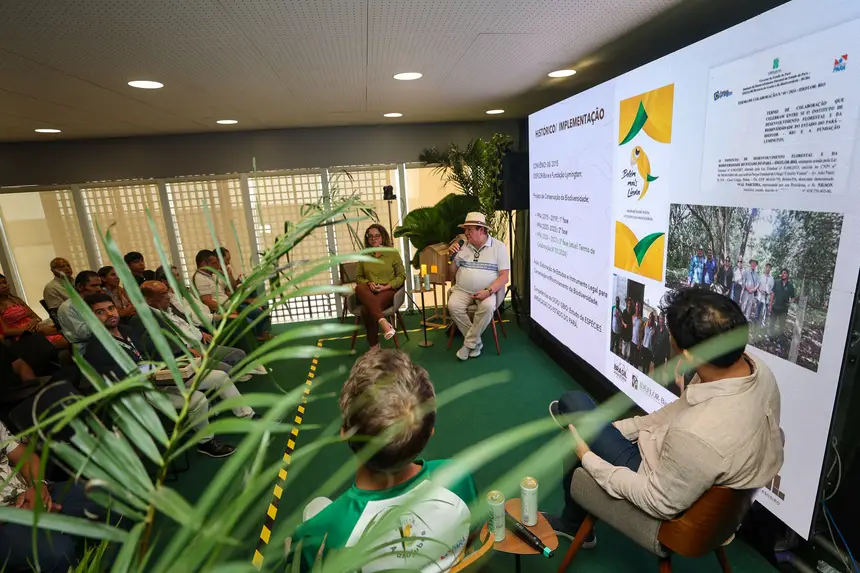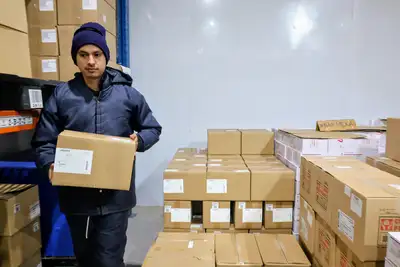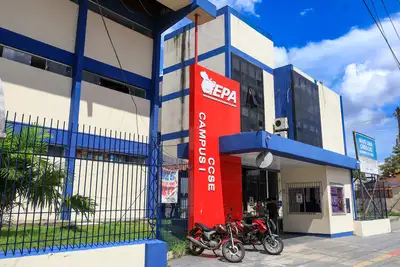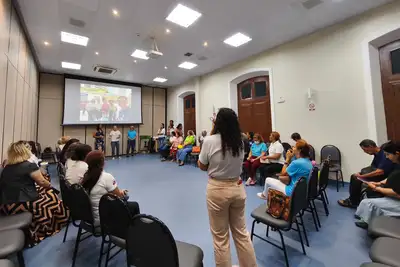Ideflor-Bio presents advances in the reintroduction of ararajubas in the Metropolitan Region of Belém
The project, internationally recognized, symbolizes one of the greatest efforts to recover an emblematic species of the Amazonian fauna in its natural habitat

The Pará Pavilion, in the Green Zone of COP30, hosted on Friday (14) the panel "Reintroduction and Monitoring of Ararajubas (Guaruba guarouba) in the Utinga State Park and Protected Areas of the Metropolitan Region of Belém," presented by the team from the Biodiversity Management Directorate (DGBio) of the Institute for Forest Development and Biodiversity of Pará (Ideflor-Bio). The initiative, internationally recognized, symbolizes one of the greatest efforts to recover an emblematic species of the Amazonian fauna in its natural habitat.
The panel was coordinated by Ideflor-Bio's Biodiversity Manager, Mônica Furtado, alongside panelists Crisomar Lobato, Director of Biodiversity Management; Rubens Aquino, Environmental Analyst of the Institute, and Marcelo Vilarta, Biologist of the Lymington Foundation, responsible for the daily care and management of the birds. Together, they presented the latest results of the project, which has already become a national and international reference in conservation.
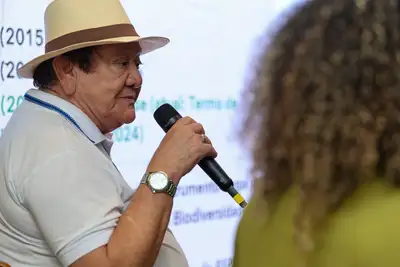
Crisomar Lobato highlighted the historic nature of the Program, recalling that the ararajuba — a symbol species of the Amazon and Pará — had been absent in the wild in the Metropolitan Region of Belém for over 50 years.
“This panel is of great importance because it presents one of the most successful projects for monitoring and reintroducing ararajubas in the region, especially in Utinga State Park,” said the Director of Biodiversity Management. He further explained that the process required intense work to adapt the animals. “We will first release 15. Then, another 15, to complete the 30 ararajubas, in honor of COP30,” said Crisomar Lobato.
Importance for fauna - Mônica Furtado emphasized that the relevance of the project has crossed borders this week, when the initiative was included among the 100 projects recognized by the International Union for Conservation of Nature (IUCN). “For us, it was a great surprise and immense joy. This international recognition reinforces the consistency of the results obtained so far,” she reported, highlighting the impact of presenting the project to a global audience at COP30. “Many people are getting to know the ararajuba now, through the dissemination of our work. This is a very important milestone,” she added.
The manager also emphasized the need to value and protect the species, which is endemic to the Amazon and has approximately 80% of its population distributed across the forests of Pará. “COP30 is an opportunity to give visibility to the symbolic and ecological role of the ararajuba. I also advocated for the importance of more than 16,000 hectares of protected green areas in the Metropolitan Region of Belém — such as the Belém Environmental Protection Area (APA), Utinga State Park, the Metropolitan Wildlife Refuge of the Amazon in Marituba, and the Combu Island APA — which form an essential forest corridor for the adaptation and movement of these birds,” she explained.

Educational booklet - One of the most celebrated moments of the panel was the launch of the educational booklet “Jubinhas Belenenses,” created to bring children closer to the conservation history of the species. The material presents, in playful language, the journey of the seven chicks born over the six years of project execution, reinforcing the role of environmental education as a tool for social awareness.
The participation of the Lymington Foundation, represented by biologist Marcelo Vilarta, also gained prominence. He explained details of the daily management of the birds, from feeding and conditioning to the pre-release process, which prepares the groups for life in the wild. According to him, the fieldwork has consolidated protocols that could serve as a model for other reintroduction programs for psittacines (parrots, macaws, budgerigars, jandaias, and other species).
The team reinforced the symbolic nature of the next stage of the project. Next Monday (17), at 7:30 AM, the Government of Pará, through Ideflor-Bio, will release 15 ararajubas, in honor of COP30, to reinforce the State's commitment to the conservation of Amazonian biodiversity. The initiative is yet another milestone in the return of the species to the protected areas of the Metropolitan Region of Belém — now, once again tinged with yellow and green during the flights of the ararajubas.


